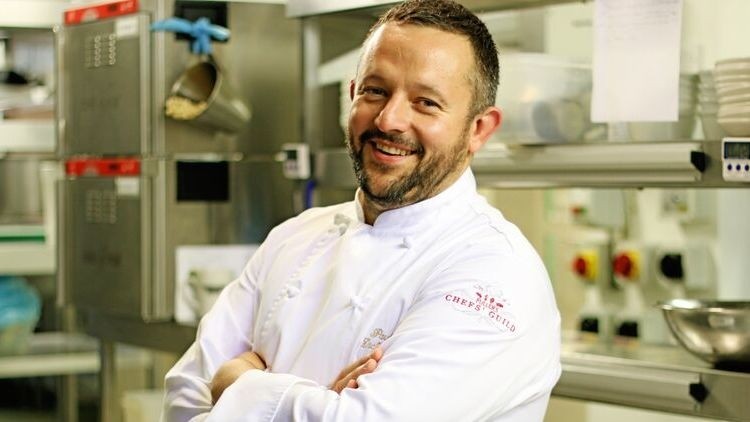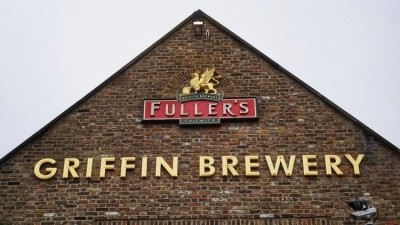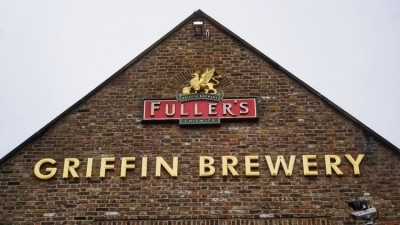Fuller's: We have a formula to get famous for food

Paul Dickinson is extremely enthusiastic about the Fuller’s Chef of the Year competition. Recently celebrating its third anniversary, the cooking contest pits kitchen talents from pubs across the group against one another. “It really shows just how important food is in our business,” said Dickinson. “It is the pinnacle of my year because it’s fun, and fun in the sense of everything we practice, we preach, we train, customers’ feedback – it all happens in four hours.”
This year, an esteemed panel of judges – including Michelin-starred chefs Russell Brown and Pierre Koffmann, who Dickinson described as “like my grandad” – awarded Andy Bunting, from the Wykeham Arms, Winchester, Hampshire, the main prize, while Amber Barnes, sous chef at the King’s Head in Wickham, near Fareham, Hampshire, topped the junior category.
Dickinson on paper – CV
- Got a taste for professional cooking while working at first-class kitchens at Jeddah International Airport in Saudi Arabia
- Cooked his way around the world, from the Middle East to Spain, with a stint under Marco Pierre White in the UK
- Came on board Fuller’s in 2011 as executive chef and was promoted last year to director of food
Barnes’ win is an inspirational example of how the Chef’s Guild has helped build up the Fuller’s kitchen arsenal. Founded by Dickinson in 2015, the guild is just one of a number of innovations that he has brought to the pub group since he joined on Valentine’s Day in 2011.
It wasn’t love at first sight though. “Lots of people when I joined Fuller’s said I was mad,” he recalled, adding that he was initially sceptical about how his forward-thinking attitude would fit into what many saw as a traditional business.
Fuller’s seems to be thriving, with the recent acquisition of the six Bel & the Dragon pubs, a deal several years in the making. “Bel & the Dragon will run under its own umbrella,” said Dickinson. “It’s not for us to change centrally. They have a well-established team of chefs lead by executive chef Ronnie Kimbugwe and we look forward to learning from them as a package.”
Tasked with the job of making Fuller’s famous for food, Dickinson has created a long-term plan that encompasses not just developing new dishes, but creating a more positive working environment for everyone, as he told Food Spark:
“With the UK hospitality industry, there’s the perception that if you go and work there, you’ll die, because it’ll break you one way or another. Whereas in America, where we send the teams who win the Chef of the Year, it’s a respected business.
“I love to go to America because nothing’s impossible. They’re more Eastern than Western in how they make decisions, whereas in the UK we procrastinate. So if you can take a front-of-house and back-of-house team to America and they can bring back 1% of that energy and share it with an estate of 4,000 people, it just shows the people that run our business that nothing’s impossible.
“I think in the UK, the hospitality business has done well and is continuing to make positive strides in so many areas. However, there is still a perception that if you work there, you will be underpaid and under-appreciated. Having said that, I am starting to see a trend whereby younger generations are coming through and changing attitudes – it is great to watch.
“We need to give our chefs four days on, three days off. We need to give them no more than 10 hours a day. Stuff like that – which we’ve done with our apprentice scheme – is fantastic, but you’ve still got head chefs working 80, 90 hours a week, and what’s the reward for doing it? It’s complex, and I think head chefs just want the balance of time now, in order to relax.
“When you hear these chefs say, ‘I want to be a Michelin-star chef,’ I ask, ‘Have you got the team to do it? No? Right, well focus there.’ And if you do great and you have a high-performing team that knows what you expect of them… the by-product is an award.
“There were some amazing pubs when I joined [Fuller’s] doing amazing food, but there was a disconnect. We had to build a framework, develop people, have a supply chain that is sustainable, and then work out a way to deliver food that’s not like for like in every pub.
“[It’s been a] privilege to build a food model that isn’t like for like in the sense of every menu everywhere. And it’s been built by a group of people – I’d say there’s been about 40 chefs who have done a lot of the work. Going forward it’s opened up to everyone, so they can have their dishes [on the menu].
“One of the biggest [developed] dishes that is so popular and is used in a lot of places was a tea and hop smoked haddock dish with new potatoes, spinach and butter sauce. It’s a classic. That came from feedback from a group of customers in Hampshire [who wanted] some traditional dishes with a twist. So we came up with that. But the chef who nailed that dish, when he gets paid he’s going to get a pay-out. We are working on a model to reward our chefs. We want to acknowledge [the chefs] and thank them for doing a great dish that’s well spec’d and is used across the business.
“We’ve now got a strategy called ICE: ingredients, creativity and execution. So the ingredients are the suppliers; the people; the guild and invested kitchens. The creativity is each house owning their menus; the chefs; building a repertoire; training. And the final one is execution, which is all about the customer: reviewing; Net Promoter Scores; seasonality; dishes that don’t work; chef signatures, and then start the review process all over again, never becoming complacent.
“I think the innovation piece was the easy part. We’ve got a selection of amazing cask ales, and to turn salmon and beer together is pretty easy in my eyes, but people were like, ‘Wow, that’s delicious.’
“The beer and food thing, from customer feedback they love it. The smoked salmon, the trout, the vintage ale sticky toffee pudding... We’ve got some chutney coming too.
“It’s not about doing everything with beer and food; it’s about having a complement that can work in many options… It’s about how you incorporate beer into food without killing the beer, disrespecting it and ruining the food.
“I like Wild River – I like all the hoppier beers, getting a cracking headache in the morning from them. The hoppier it is, the more acidic the food needs to be, whereas London Pride goes great with an alkaline, like avocado or something like that. And that’s what I learned in Spain: about acidity, the nutritious element.
“If I had my way, I’d barbecue everything, with loads of acrylamides, with loads of coal, because the flavour’s very different.
“We’ve gone back to certain products and said, is that good enough? The chocolate brownie that’s been out there for a while, I’m looking at different chocolates now.
“One of the other things that worked really well but I wasn’t happy with is the Cornish Orchards trout. I wasn’t happy with the flavour, but now we’ve got this Cornish Orchards Dry Cider coming out, I’m like, bang! Get the trout back!
“It seemed right as a business our size to have our own bacon, our own black pudding – we do approximately 30 tons of black pudding a year, most of it through London Pride. Big breakfast is a big thing in our business. We’ve got our own sausages, we know where all our meat comes from.
“Our supplier, Owton’s, have allocated cutters from steaks to lamb. And if you get a tray of steaks, they’ll have the cutter’s name on it, so if you’re not happy with something, we call David or John or Sarah and say, look, on that steak, can you just keep an eye on the fat content? And they trim it back and do the lard. So that’s how personal the spec is. All our chefs get to go down and visit the suppliers.
“To make sweet pastry and roll it in a hot kitchen is a nightmare. So we spoke to our pastry supplier and said: ‘Can you follow our recipe and deliver fresh sheets of pastry to our kitchens three times a week?’ So now pastry comes in, the chefs mould it, they make a lemon tart or they make a bakewell or a Tatin – whatever they want to do, but the hard product’s been done.
“I love pastry, it’s my favourite thing to go and hide in and have fun. For Christmas, we’re doing a Swiss roll. We’ve got an espresso stout that we launched as a seasonal in November and December last year, which I became addicted to… But basically I’m going to create a Swiss roll espresso with an amazing filling and we’ll put our Laverstoke ice cream with it. But when you try it, it’s like a Swiss roll you’ve never had before… that’s one dish I cannot wait to see on menus.
“Our ice creams took two years to come alive. That was hard work, and it’s still hard work now, because there’s so many flavours I want, but I know it’s too many. So coconut ice cream, I love it. Pistachio, I love it. But with our current portfolio, salted caramel is amazing. We’ve got some earl grey and cardamom around at the moment for a few months, and then when it’s gone, it’s gone. It’s about how we keep evolving things and including people. We are adding two vegan flavours: vegan chocolate, which will replace our current chocolate, and coconut. Delicious.
"The worst thing I ever saw was an inverted Scotch egg, where someone had fried the meat and put a poached egg on top. Why?!
"With our guild, you can see the standards that we’re teaching them are starting to come through… Our chefs will all do an asparagus dish differently, but they’ll cook the asparagus the same way, they’ll poach the egg the same, make the Hollandaise the same. Consistency is key.
"To get to ‘famous for food,’ we have a formula. If we’re not there yet, we’ll get there."
This article was supplied by The Morning Advertiser’s sister title www.foodspark.com. Food Spark’s mission is to keep food professionals ahead of culinary trends. Request a trial here: uryc@sbbqfcnex.pbz






